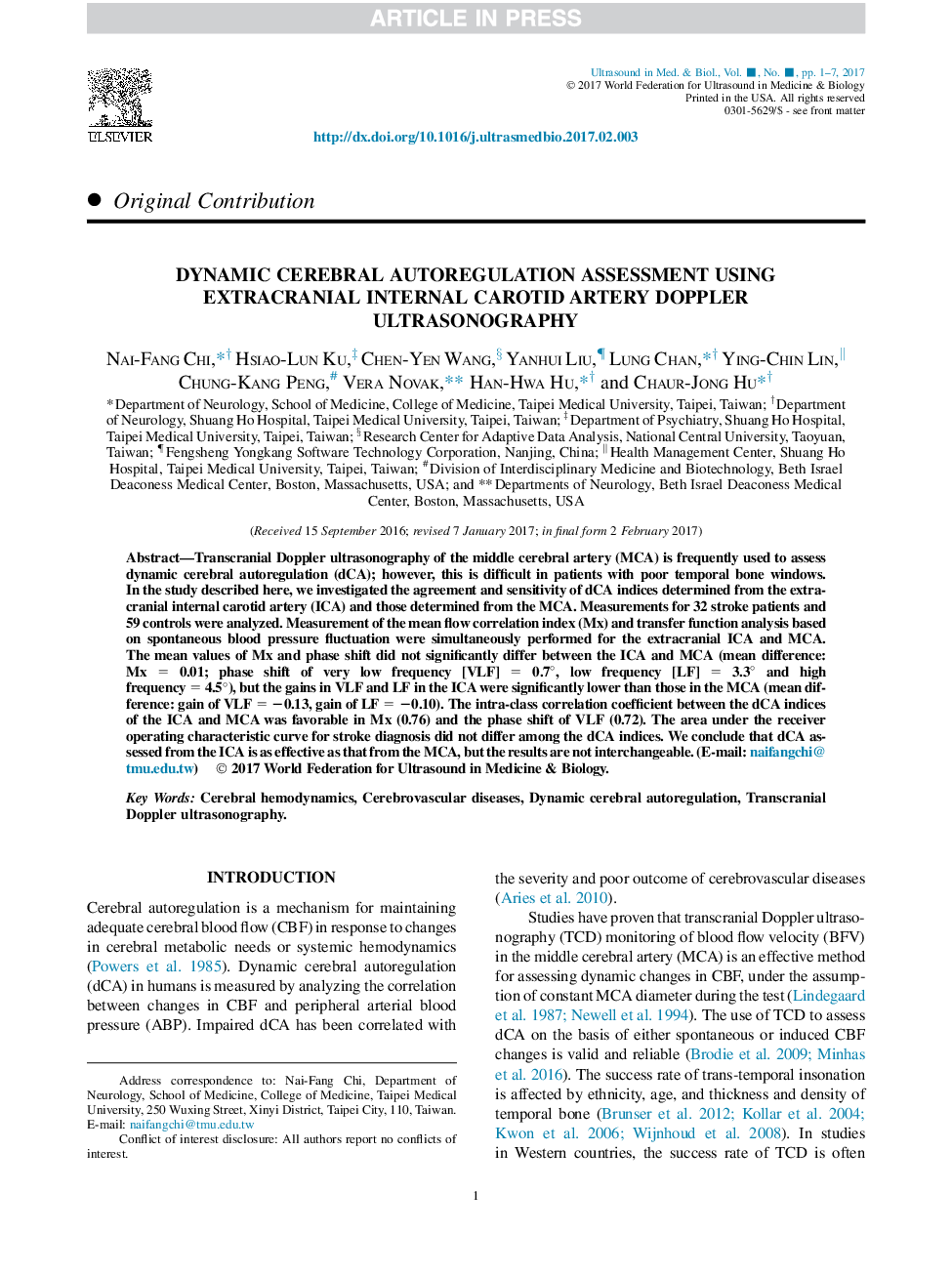| Article ID | Journal | Published Year | Pages | File Type |
|---|---|---|---|---|
| 5485636 | Ultrasound in Medicine & Biology | 2017 | 7 Pages |
Abstract
Transcranial Doppler ultrasonography of the middle cerebral artery (MCA) is frequently used to assess dynamic cerebral autoregulation (dCA); however, this is difficult in patients with poor temporal bone windows. In the study described here, we investigated the agreement and sensitivity of dCA indices determined from the extracranial internal carotid artery (ICA) and those determined from the MCA. Measurements for 32 stroke patients and 59 controls were analyzed. Measurement of the mean flow correlation index (Mx) and transfer function analysis based on spontaneous blood pressure fluctuation were simultaneously performed for the extracranial ICA and MCA. The mean values of Mx and phase shift did not significantly differ between the ICA and MCA (mean difference: Mx = 0.01; phase shift of very low frequency [VLF] = 0.7°, low frequency [LF] = 3.3° and high frequency = 4.5°), but the gains in VLF and LF in the ICA were significantly lower than those in the MCA (mean difference: gain of VLF = â0.13, gain of LF = â0.10). The intra-class correlation coefficient between the dCA indices of the ICA and MCA was favorable in Mx (0.76) and the phase shift of VLF (0.72). The area under the receiver operating characteristic curve for stroke diagnosis did not differ among the dCA indices. We conclude that dCA assessed from the ICA is as effective as that from the MCA, but the results are not interchangeable.
Keywords
Related Topics
Physical Sciences and Engineering
Physics and Astronomy
Acoustics and Ultrasonics
Authors
Nai-Fang Chi, Hsiao-Lun Ku, Chen-Yen Wang, Yanhui Liu, Lung Chan, Ying-Chin Lin, Chung-Kang Peng, Vera Novak, Han-Hwa Hu, Chaur-Jong Hu,
